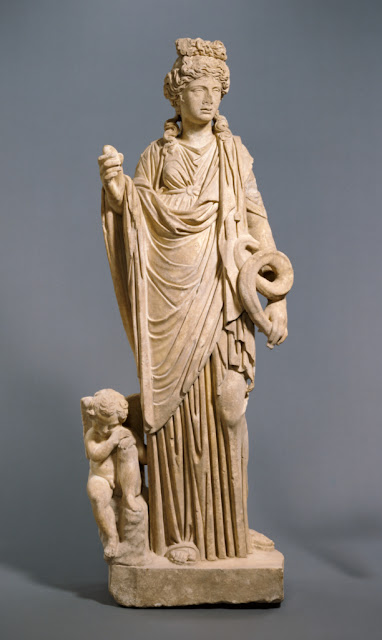“Kings of the Sun” in Prague, Czech Republic through February 7, 2021

.The exhibition, "Kings of the Sun", which will run until Feb. 7, 2021, will display 90 artifacts unearthed by the Czech archaeological mission working on the site of Abu Sir in Egypt's Giza governorate. Chief among these treasures is the head of a statue of King Ra-Nefer-F produced around the year 2460 BCE. Abu-Sir is a royal burial ground with three pyramids built during the Fifth Dynasty. The display will encompass artifacts from the 3rd to the 1st millennium BCE and include an extensive collection of statues from the tombs of Princess Sheretnebty and the scribe Nefer discovered in 2012. Statues of a writer, senior statesmen, and royal staff as well as canopic jars, and Faience ushabti figurines will be presented. Image: Old Kingdom statue of an Egyptian couple from the exhibit "Kings of the Sun" courtesy of Egypt's Ministry of Tourism and Antiquities.















